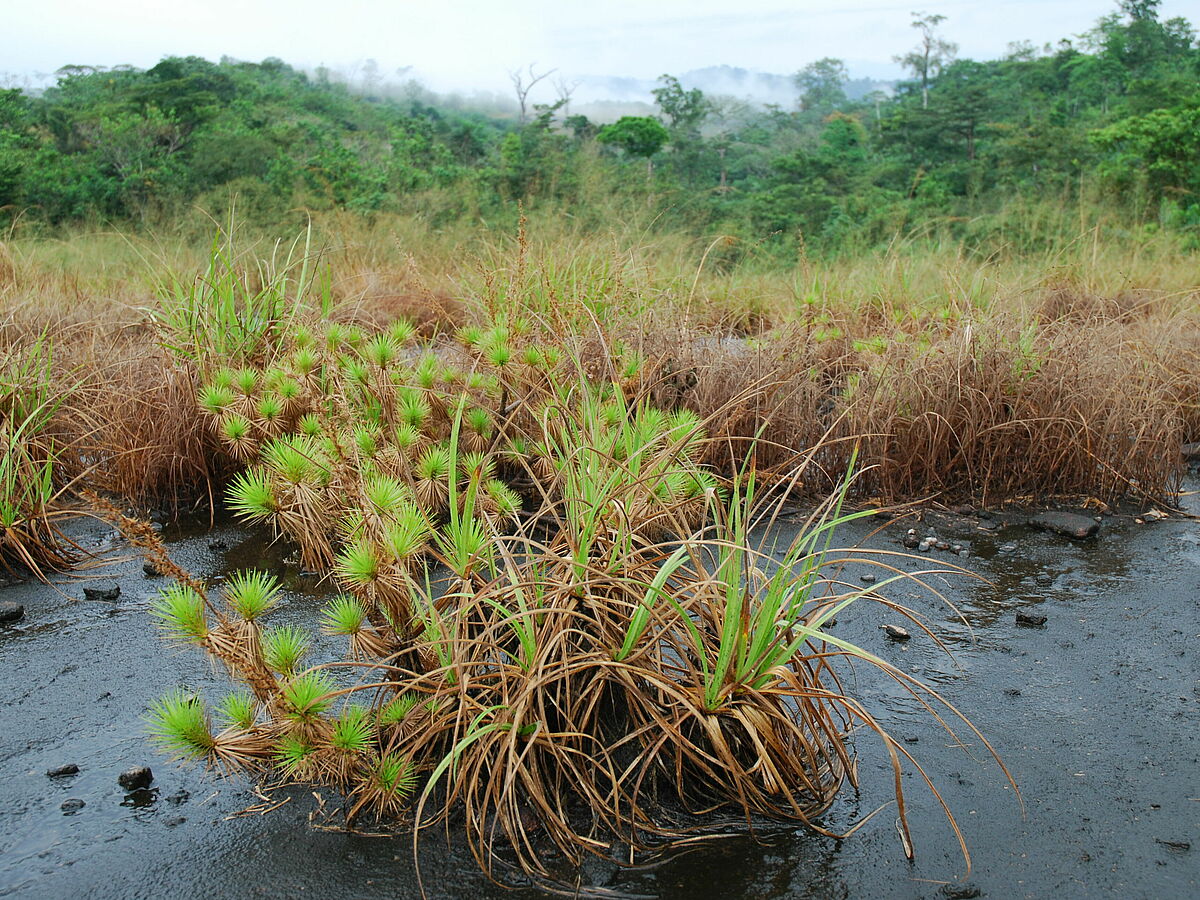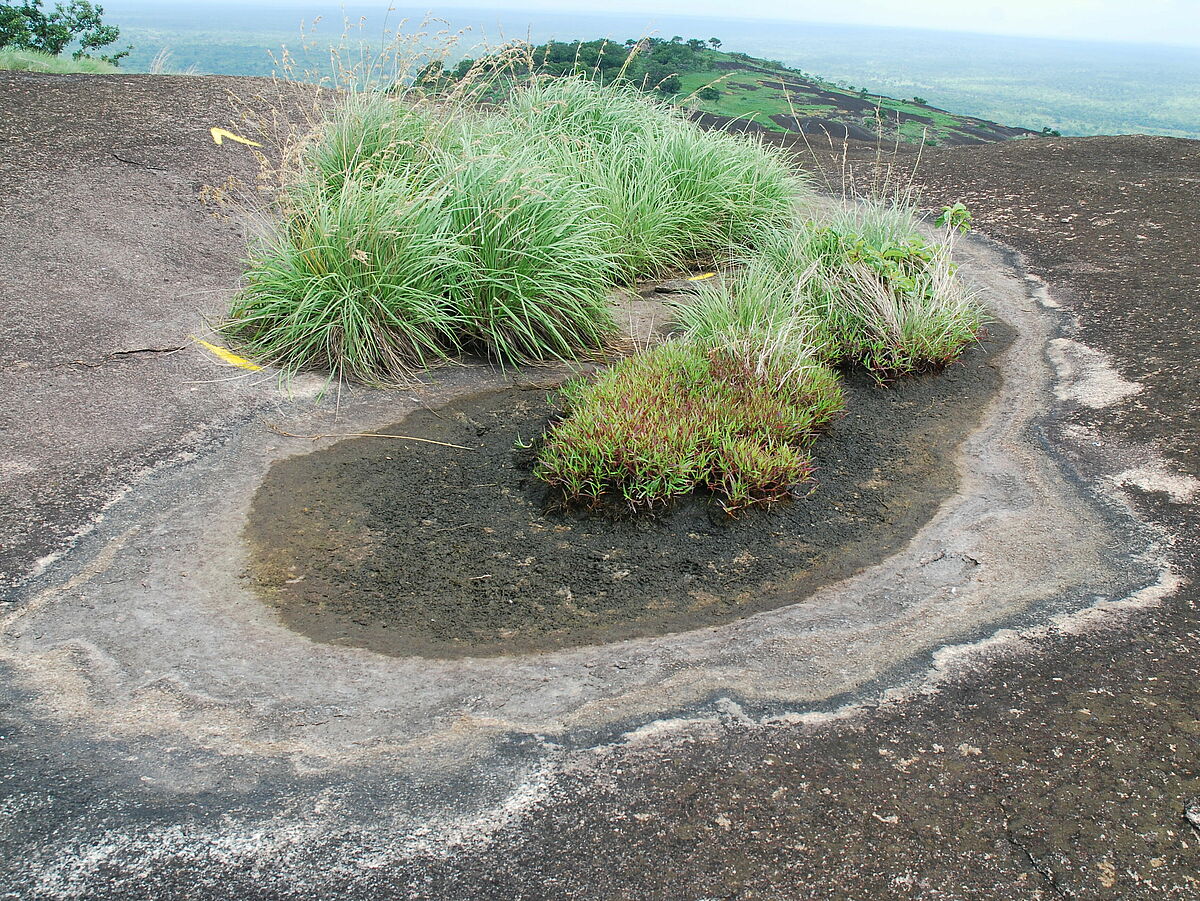Despite being characterized by extreme environmental conditions (e.g. high temperatures, lack of water), inselbergs harbour a surprising richness of plant communities. Typically their vegetation is clearly demarcated from that of the surroundings. The large expanses of open rocky slopes are covered by cryptogamic crusts consisting of cyanobacteria and lichens. Other habitat types and plant communities are e.g. monocotyledonous mats, shallow depressions, rock pools and ephemeral flush vegetation. Inselbergs in the tropics (e.g. in Brazil and Madagascar) are characterized by high numbers of plant species and local endemics. They form centers of diversity for highly specialized life forms such as carnivorous and desiccation-tolerant plants. Whereas our floristic knowledge about inselbergs in parts of Africa (e.g. Côte d’Ivoire), South America (e.g. southeastern Brazil) and Australia is relatively good, there are still many regions and countries (e.g. Angola, India) which are rich in inselbergs but from where almost no data are available.


